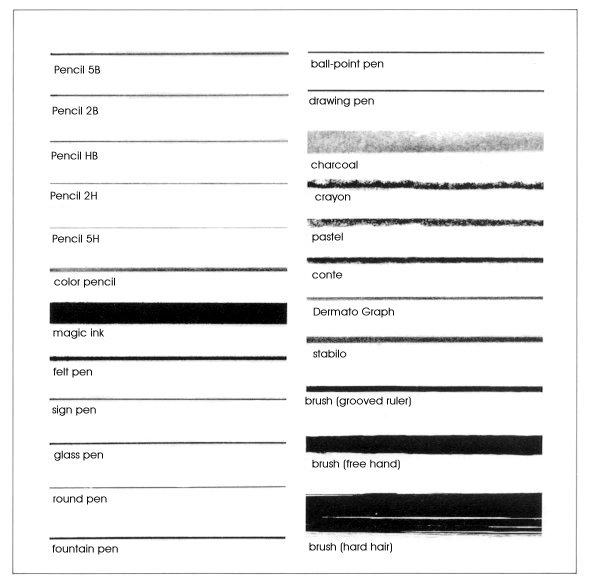(1) Relation between points, lines, and planes
When a point moves it becomes a line, then a line moves and becomes a plane. When a plane
moves it become a solid. In mathematics, their dimensions are respected, and without considering the
"quantity" of points or lines it is discussed purely as the problem of forms, locations, and directions.
However, in formative arts, invisible shapes can not be treated. So, as the shape with area was treated
in the section on points, lines are treated by being given width and thickness. But these areas and
widths, of course, weaken their images as lines as the quantity increases, and the awareness of a
plane gradually becomes strong. In this case, a borderline cannot be drawn where the recognition as
the shape of a plane occurs. It depends on the surroundings. But it can be said that even a very thick
line is mixed, it is easy to be thought of as a line in the case of a collection of same or similar lines.

43
|
|
NEXT
CONTENTS